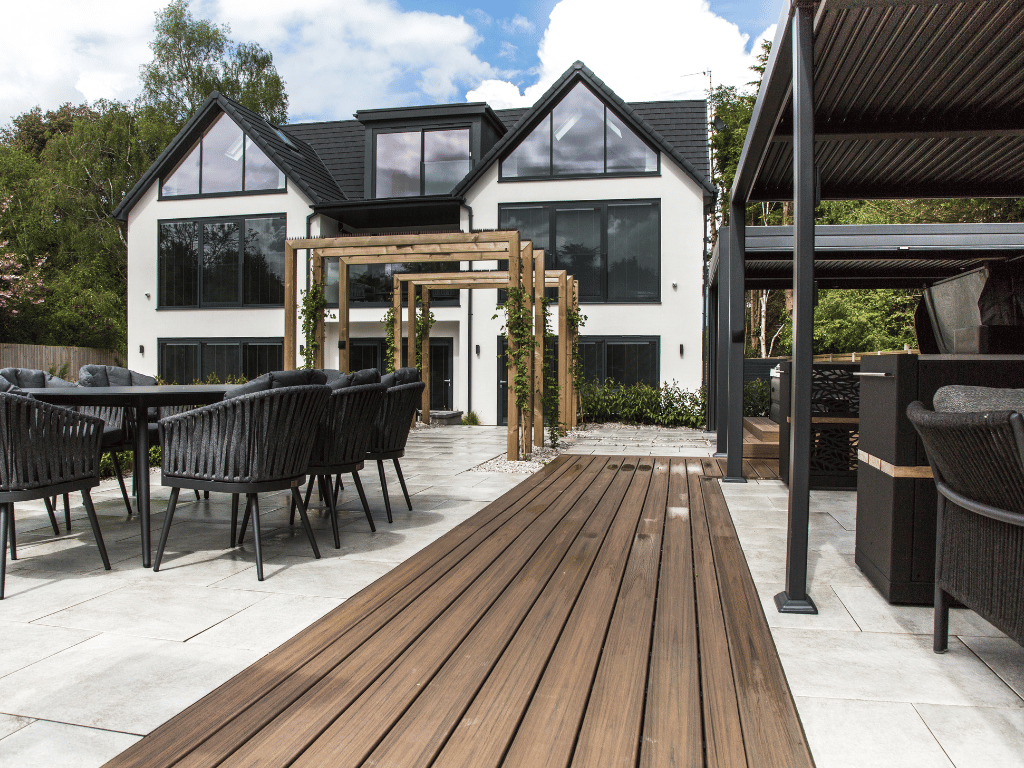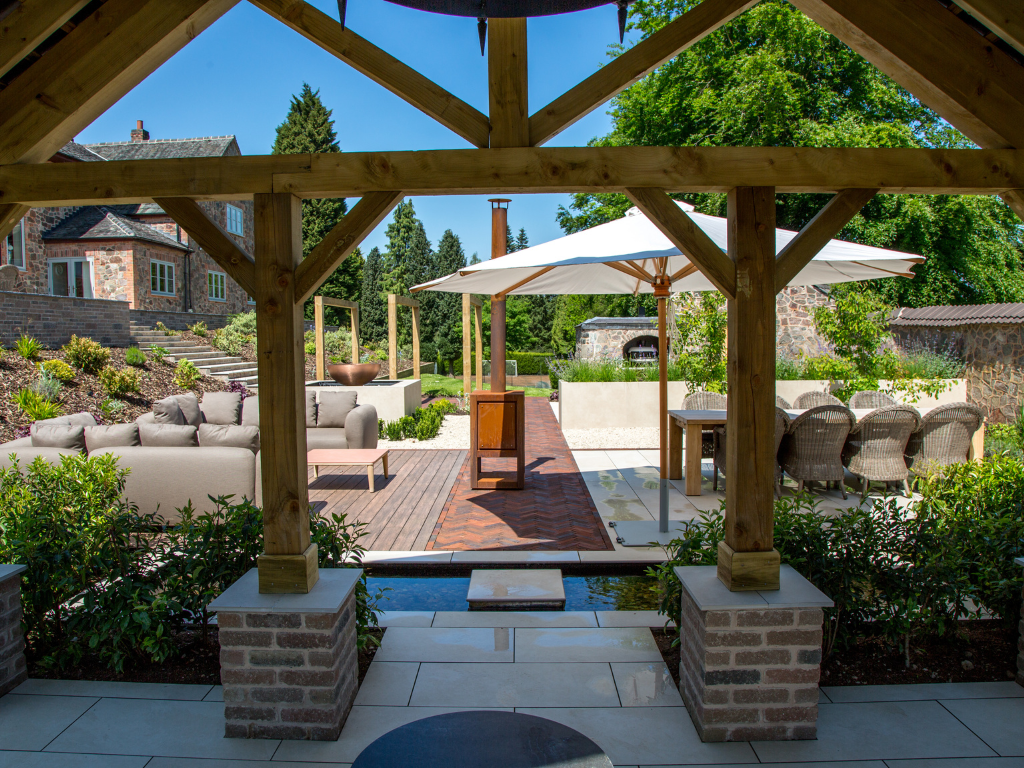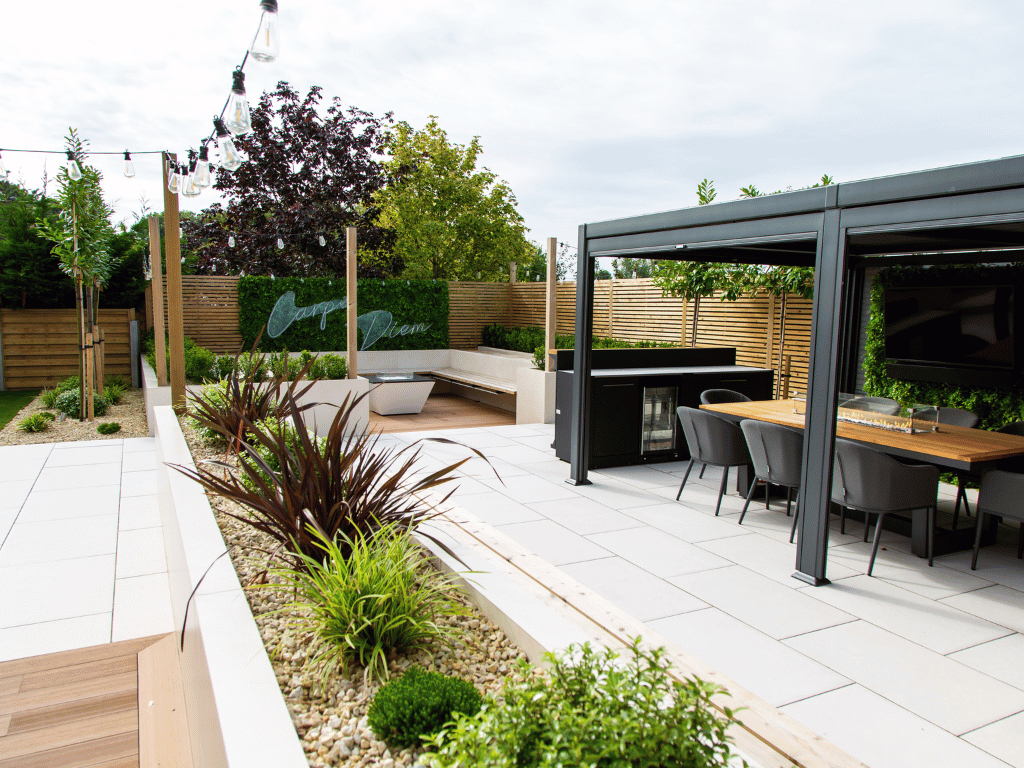Water Features in Garden Design: Ideas for Incorporating Water Elements


In today’s fast-paced world, finding time to maintain a beautiful garden can be a challenge. However, with the right approach, it is possible to design a low-maintenance garden that still has a high visual impact. Understanding the concept of a low-maintenance garden is the first step to achieving this goal.
Defining what we mean by ‘low-maintenance’ in the context of gardening is essential. It means creating a garden that requires minimal effort and time to keep it looking its best. This involves choosing the right plants, incorporating hard landscaping, and designing the layout strategically.
But let’s delve deeper into the world of low-maintenance gardens and explore the fascinating details that make them so appealing.
When we talk about a low-maintenance garden, we mean a garden that doesn’t rely heavily on constant attention and care. It’s important to understand that low-maintenance doesn’t mean no maintenance at all. After all, even the most self-sufficient plants need a little love and care from time to time.
However, the beauty of a low-maintenance garden lies in its ability to thrive with minimal intervention. By carefully selecting plants that are well-suited to your climate and soil conditions, you can create a garden that requires less pruning, weeding, and watering. This means less time spent on tedious tasks and more time to simply enjoy the beauty of nature.
There are several benefits to creating an easy-care garden that extend beyond the obvious time and effort savings. Let’s explore some of these advantages in more detail.
Firstly, an easy-care garden allows you to reclaim your leisure time. Instead of spending hours on end tending to your plants, you can sit back, relax, and truly enjoy your outdoor space. Whether it’s reading a book, hosting a barbecue, or simply soaking up the sun, a low-maintenance garden gives you the freedom to make the most of your precious downtime.
An easy-care garden can be a source of inspiration and creativity. With the right selection of plants and strategic design, you can create a visually stunning landscape that requires minimal upkeep. Imagine a garden filled with vibrant flowers, lush greenery, and interesting textures, all effortlessly coexisting in harmony. It’s a canvas waiting for you to add your personal touch and create a space that reflects your unique style and taste.
So, if you’re a busy professional looking for a peaceful retreat, a low-maintenance garden offers a world of possibilities. By understanding the concept and embracing the benefits, you can embark on a journey to create a garden that brings joy, tranquility, and beauty into your life.

When designing a low-maintenance garden, there are two key elements to consider: selecting the right plants and incorporating hard landscaping features.
Creating a garden that requires minimal upkeep is a dream for many garden enthusiasts. It allows you to spend more time enjoying the beauty of your outdoor space rather than constantly tending to its needs. Let’s delve deeper into the key elements that can help you achieve a low-maintenance, high-impact garden.
One of the most important aspects of creating a low-maintenance garden is choosing plants that require minimal upkeep. It’s like assembling a team of green superheroes that can thrive without constant attention. Opting for native plants that are well-suited to your climate and soil conditions is a wise decision.
Native plants have evolved over time to adapt to the specific conditions of your area, making them naturally more resistant to pests and diseases. They have developed a harmonious relationship with the local ecosystem, ensuring their survival and reducing the need for intervention on your part. By selecting these resilient plants, you are not only saving yourself time and effort but also contributing to the preservation of biodiversity.
When browsing through the vast array of native plants available, consider those with a long blooming season or interesting foliage. These plants will provide year-round interest, ensuring that your garden remains visually appealing even during the colder months when many other plants go dormant. Imagine the joy of looking out of your window and being greeted by a burst of vibrant colours or unique textures throughout the year.
In addition to carefully selecting plants, incorporating hard landscaping features can add high impact to your garden while reducing maintenance needs. Hard landscaping refers to the non-living elements of your outdoor space, such as paved areas, gravel paths, and raised beds.
By strategically placing these features, you can create visual interest and focal points that draw the eye. They can serve as the backbone of your garden, providing structure and defining different areas. Imagine a winding gravel path leading you through lush greenery or a beautifully paved patio area where you can relax and unwind.
But the benefits of hard landscaping go beyond aesthetics. They can significantly reduce the need for regular mowing and weeding, giving you more time to simply enjoy your garden. Paved areas and gravel paths minimise the amount of grass you have to maintain, while raised beds can help control weeds and provide better drainage for your plants.
When incorporating hard landscaping features, consider the overall design and functionality of your garden. Think about how different elements can work together to create a harmonious and inviting space. Whether you choose to add a water feature, a seating area, or a pergola, each addition should serve a purpose and enhance the overall experience of your garden.
So, when embarking on your low-maintenance garden journey, remember to select the right plants and incorporate hard landscaping features. By doing so, you can create a garden that not only requires less maintenance but also leaves a lasting impact on all who visit.

When designing a low-maintenance, high-impact garden, proper planning is crucial. Paying attention to the layout and creating focal points will ensure your garden is not only easy to maintain but also visually stunning.
Start by assessing the available space and dividing it into different zones based on your preferences and requirements. Ensure you have enough walking space and consider the positioning of features such as seating areas and play spaces if applicable. By creating distinct areas, you can ease maintenance and streamline your gardening tasks.
Incorporating focal points in your garden design helps draw attention and creates visual interest. Consider features such as water features, sculptures, or even a well-placed seating area. These elements not only add a wow factor to your garden but also divert attention from less maintained areas.
Having a low-maintenance garden doesn’t mean neglecting it entirely. Regular care is still necessary to ensure your garden remains healthy and vibrant throughout the seasons.
Throughout the year, different tasks will arise when caring for your garden. For example, pruning in late winter or early spring, mulching in summer to conserve moisture, and cleaning up fallen leaves in autumn. Understanding and implementing these seasonal tasks will help keep your garden looking its best.
Investing in the right tools is essential for maintaining your easy-care garden efficiently. Some essential tools include a good quality pair of secateurs for pruning, a sturdy garden fork for turning soil, and a lightweight rake for tidying up fallen leaves. Additionally, a good garden hose or watering can is necessary to ensure your plants receive adequate water.
If you already have an established garden but want to reduce the maintenance required, there are steps you can take to transition to an easy-care garden.
Start by assessing your existing garden to determine areas where maintenance can be reduced. Consider removing high-maintenance plants and replacing them with low-maintenance alternatives. Identify areas that could benefit from hard landscaping to reduce maintenance requirements.
To transition to an easy-care garden, take it step by step. Start by decluttering and removing any unwanted plants or features. Next, incorporate low-maintenance plants and consider adding hard landscaping elements. By taking deliberate actions, you can gradually transform your existing garden into a low-maintenance space.
Designing a low-maintenance, high-impact garden is possible with careful planning and selection of plants and features. By understanding the concept and benefits of easy-care gardening, incorporating key elements, and following practical maintenance tips, you can create a stunning garden that requires minimal effort to maintain. Whether starting from scratch or transforming an existing garden, the result will be an outdoor space that brings joy and relaxation without the constant hassle of high maintenance.
Whenever you’re ready, we’ll be happy to come along and help you plan your garden upgrade. To get one of the friendly design team to take the stress out of designing your garden click below.